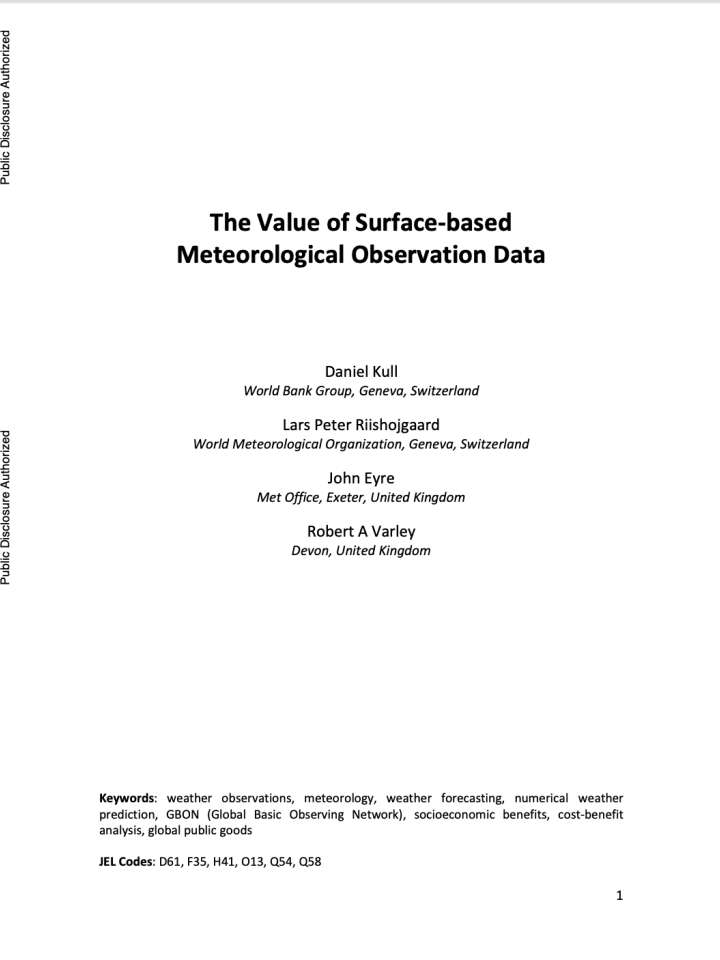The value of surface-based meteorological observation data
This paper examines the value of surface-based meteorological observation data. Weather forecasting generates significant societal benefits, which can be increased by improving accuracy and lead-time through better meteorological monitoring, modeling and computing. Forecasting relies on numerical weather prediction (NWP), which is significantly impacted by the availability of meteorological observations, with space-based observations being the most important. Surface-based observations also contribute substantially to NWP performance, but current availability in Antarctica, Africa, South America, the Pacific and parts of Asia is insufficient. More observations from these regions would improve global NWP and forecasting quality, particularly in the data-sparse regions themselves, but also over the rest of the globe.
This paper estimates that improvements in the coverage and exchange of surface-based observations to meet the World Meteorological Organization’s Global Basic Observing Network (GBON) specification can deliver additional global socioeconomic benefits of over five billion annually. This is a conservative estimate omitting non-financial benefits such as potential lives saved and improvements to well-being, so underestimates the full benefits, particularly for developing countries. Investing in improving surface-based observations in data sparse regions is also highly economically efficient, yielding a global benefit to cost ratio of over twenty-five. Assuming sufficient observational coverage, international data exchange is a very efficient multiplier of the value of observations. However, exchange is currently insufficient across all regions. In view of the growing climate- and weather-related challenges facing humanity and recognizing that climate services similarly rely on meteorological monitoring, surface-based observations should be treated as a critical public good, with public oversight and open exchange within the meteorological and climatological communities.
Explore further

